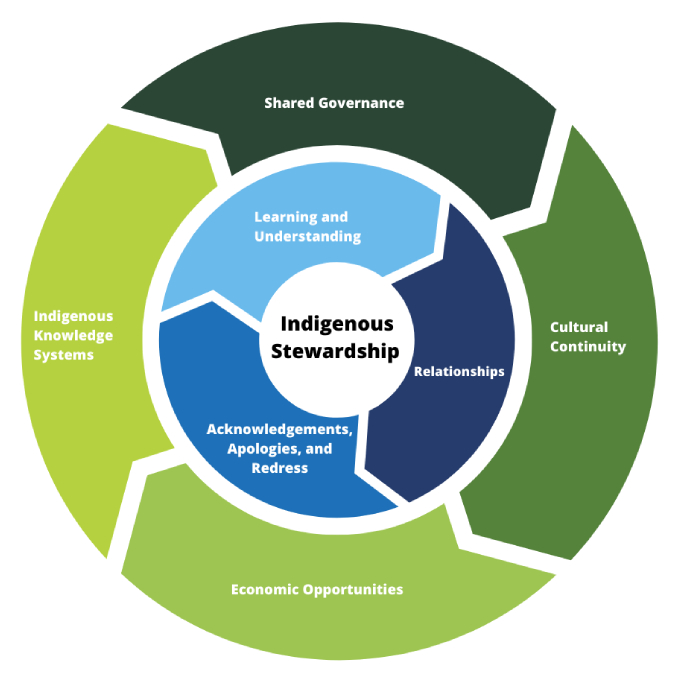
The Saoyú-Ɂehdacho Cooperative Management Board meets during the 2015 Knowledge Camp on the peninsula of Saoyú on Sahtú—Great Bear Lake—in the Northwest Territories.
Indigenous relations, stewardship and guidance
Indigenous Peoples play an essential role in protecting and conserving the lands, waters and ice in the region now known as Canada, which has been their home for thousands of years. However, in many places, Parks Canada’s actions have cut or severely altered Indigenous Peoples’ long-standing relationships and sacred responsibilities for the lands, water and ice that have determined their identities and influenced their cultures and languages.
Parks Canada is implementing the United Nations Declaration on the Rights of Indigenous Peoples through an Indigenous stewardship framework. Read the Report and Response on Indigenous stewardship of protected heritage places. The Indigenous Cultural Heritage Advisory Council advises Parks Canada on cultural heritage-related projects or initiatives. A resource guide for Parks Canada team members and those building and managing relationships with Indigenous Peoples. Reflections and stories on working with Indigenous Knowledge Keepers to manage heritage places. Read the full policy or a shorter summary, and learn how engagement shaped the policy.United Nations Declaration on the Rights of Indigenous Peoples Act
2023 Minister’s Round Table on Parks Canada: Report and response
Indigenous Cultural Heritage Advisory Council
Promising Pathways
The Land is Our Teacher
Indigenous Stewardship Policy
Parks Canada is expanding and deepening its relationships with First Nation, Métis, and Inuit communities across the country. An important part of this work has been the development of an Indigenous stewardship framework.
The Indigenous stewardship framework is about:
- honouring relationships
- empowering Indigenous voices
- supporting Indigenous leadership and self-determination
- respecting Indigenous rights, Indigenous knowledge and Indigenous knowledge systems
- building a more equitable and sustainable future for generations to come
The framework reflects what Parks Canada has heard from Indigenous Peoples on what is needed to support Indigenous connections with protected lands, waters, and ice within their traditional territories, treaty lands and ancestral homelands. It includes elements intended to support Indigenous Peoples and Parks Canada in working together to conserve nature and culture.

Image description
Green elements: these four interconnected elements are understood to be central components of Indigenous stewardship. They include Indigenous knowledge and Indigenous knowledge systems; shared governance; cultural continuity; and economic opportunities.
Blue elements: these three elements are considered to be foundations for Indigenous stewardship: broader efforts to build and maintain strong relationships between Indigenous Peoples and Parks Canada; a willingness to work with Indigenous Peoples to examine Parks Canada’s past and acknowledge, apologize for, and redress those actions that have impacted Indigenous Peoples; and learning and understanding among Parks Canada employees and visitors of the rights, roles and responsibilities of Indigenous Peoples in the stewardship of lands, waters and ice.
A diverse group of Indigenous leaders guided the overall development of the framework. Formed in February 2023, the Indigenous Stewardship Circle (the Circle) is an advisory body composed of First Nations, Inuit and Métis rights holders. This includes modern treaty signatories, self-governing nations, and historic treaty partners, as well as national and regional Indigenous organizations. The Circle meets regularly to discuss and advance work related to Indigenous stewardship. At its core, the intent of this work is to advance reconciliation and support the implementation of the United Nations Declaration on the Rights of Indigenous Peoples.
For more information contact Parks Canada’s Indigenous Stewardship team
intendanceautochtone-indigenousstewardship@pc.gc.ca
- Date modified :